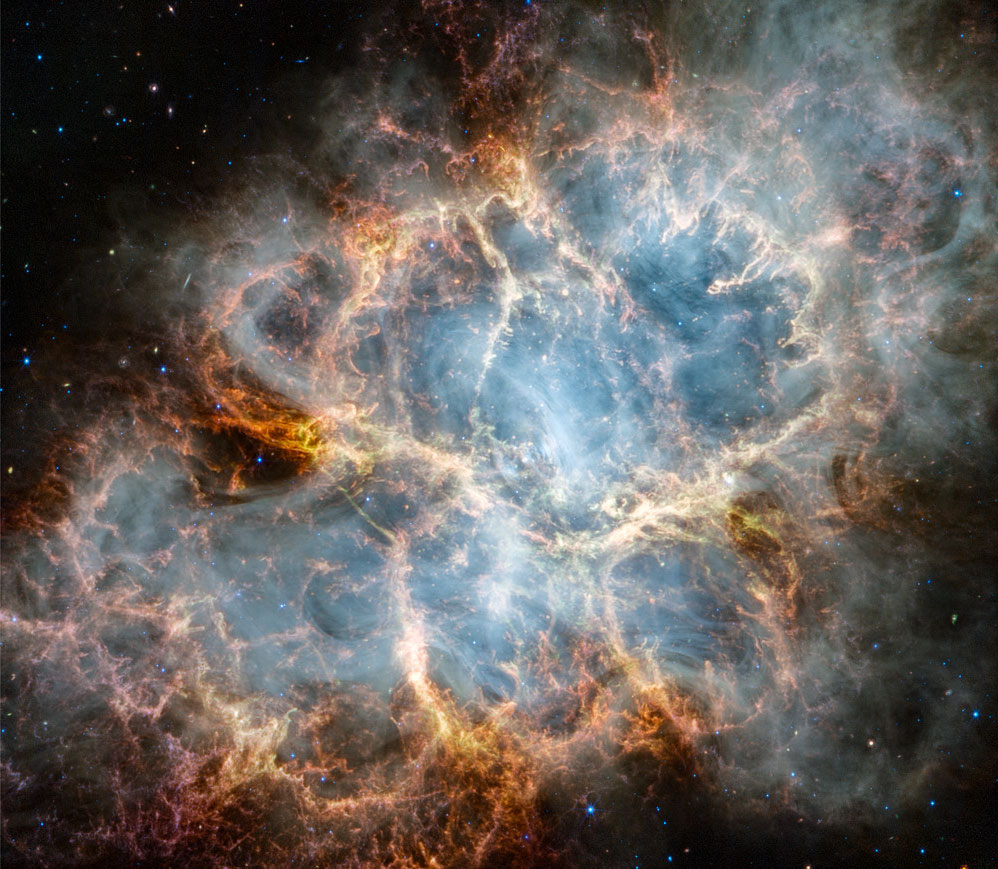2023年11月15日
M1: The Incredible Expanding Crab
Image Credit: NASA, ESA, CSA, STScI; Jeff Hester (ASU), Allison Loll (ASU), Tea Temim (Princeton University)
Explanation: Cataloged as M1, the Crab Nebula is the first on Charles Messier’s famous list of things which are not comets. In fact, the Crab Nebula is now known to be a supernova remnant, an expanding cloud of debris from the death explosion of a massive star. The violent birth of the Crab was witnessed by astronomers in the year 1054. Roughly 10 light-years across, the nebula is still expanding at a rate of about 1,500 kilometers per second. You can see the expansion by comparing these sharp images from the Hubble Space Telescope and James Webb Space Telescope. The Crab’s dynamic, fragmented filaments were captured in visible light by Hubble in 2005 and Webb in infrared light in 2023. This cosmic crustacean lies about 6,500 light-years away in the constellation Taurus.
Tomorrow’s picture: daytime Moon, morning star
M1: 不断扩张的蟹状星云
影像提供: NASA, ESA, CSA, STScI; Jeff Hester (ASU), Allison Loll (ASU), Tea Temim (Princeton University)
说明: 编录号为M1的蟹状星云,是梅西耶在18世纪编录的著名“非彗星”星表里的第一号天体。如今的我们当然知道,蟹状星云实际上是个超新星遗迹,是大质量恒星死亡爆炸后,遗留下来的扩张碎片云。而造就蟹状星云的剧变事件,(北宋的)天文学家在西元1054年有第一手的观测记录。目前这团星云的宽度大约有10光年,仍然以每秒超过1,500公里的速率在扩张。此星云的扩张样貌,可比较上面这些由哈勃及韦伯太空望远镜所拍摄的清晰影像。这些记录蟹状星云碎裂云气丝的动态行为之影像,分别为哈伯太空望远镜摄于2005年的可见光照片,以及摄于2023年的韦伯望远镜红外光照片。这团蟹状的宇宙云位于金牛座方向,离我们约有6,500光年远。
明日的图片: daytime Moon, morning star







